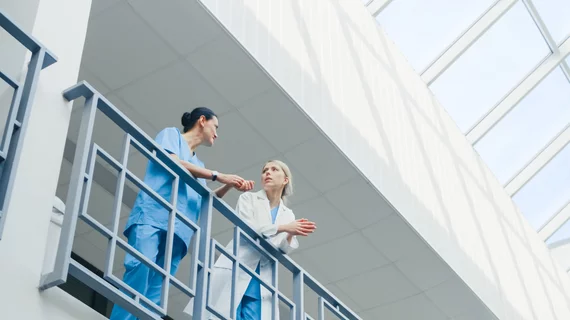Radiology-pathology meetings lead to quicker definitive diagnoses in discordant biopsy cases
Radiologist-performed CT-guided biopsies do not match pathology results in 11% of cases, with more than half later diagnosed as malignancies. The findings suggest radiologists should be more involved during patient care.
A team of Harvard Medical School-led doctors analyzed nearly 1,000 consecutive biopsies and more than 450 patients for their research, published Nov. 11 in JVIR. Radiologists brought in to review discordant cases more often recommended another biopsy rather than follow-up imaging (50% vs 13%), a practice associated with lower morbidity, hospitalizations and costs.
These discussions not only benefited patients, but also enhanced radiologists’ job satisfaction and should be considered an “integral” part of post-procedural interventional care, Andrés Camacho, MD, with Beth Israel Deaconess Medical Center, and co-authors wrote.
“In conclusion, radiologist’s involvement in the clinical management by correlation of biopsy results with imaging findings results in a higher rate of repeat biopsy recommendations, which may shorten time to definitive diagnosis for discordant cases while providing a less invasive option than surgery,” the authors added.
For their retrospective study, Camacho et al. reviewed 926 image-guided biopsies performed between January 2015 and December 2017. More than 450 patients were reviewed during 30-minute consultations with radiologists.
Overall, 11% (104/926) of cases were considered discordant and 57% (59/104) were later deemed malignant. Radiologists reviewing these results more often ordered another biopsy, leading to a shorter time to diagnosis compared to additional imaging (median 28 vs. 78 days, respectively). Surgery resulted in a definitive diagnosis within 14 days.
Despite proven benefits, many subspecialties do not utilize radiologist-pathology review, the authors noted. Breast imaging has led in this regard and should be looked at as a blueprint.
Furthermore, the time-consuming nature of performing additional safeguards can be overcome, at least partially, via artificial intelligence. Camacho et al. said they plan to develop an automated system that immediately alerts radiologists when pathology results are available.
You can read the entire report in the Journal of Vascular and Interventional Radiology.

